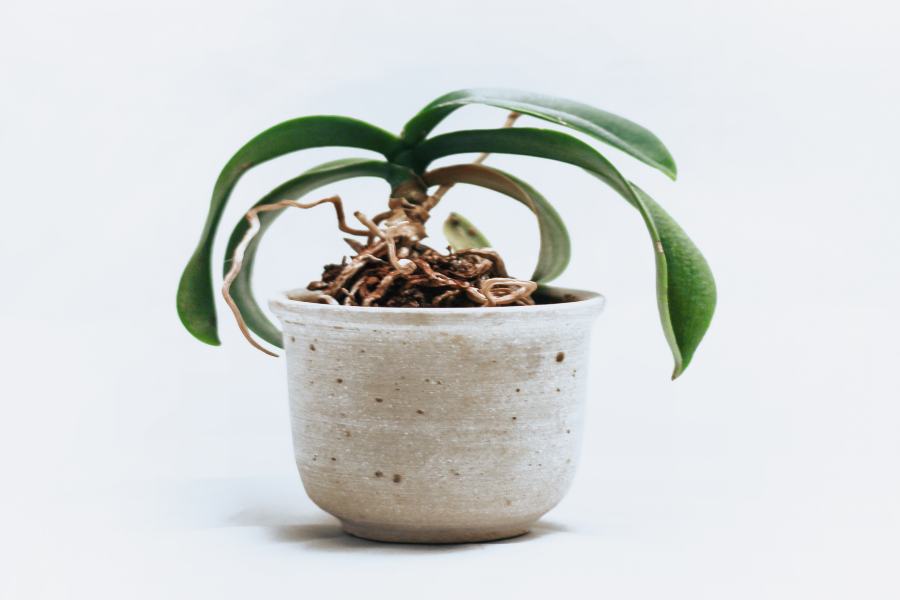Orchids, with their exquisite beauty and graceful allure, have captivated plant enthusiasts for centuries. As one of the most popular indoor plants, their delicate blooms and elegant foliage add a touch of sophistication to any space. However, even for seasoned gardeners, the experience of watching an orchid wither and decline can be disheartening. The question, “Why is my orchid dying?” echoes among those who cherish these enchanting flowers. In this article, we delve into the common issues that lead to the decline of orchids and provide practical solutions to help nurture these remarkable plants back to health. Whether you’re a novice orchid owner or a seasoned grower seeking guidance, understanding the reasons behind the decline is the first step towards ensuring their longevity and continued splendor.
Why Is My Orchid Dying?
Your orchid might be experiencing decline due to a variety of reasons. One common culprit is improper watering – overwatering can suffocate the roots while underwatering can lead to dehydration. Additionally, inadequate light exposure, incorrect temperature and humidity levels, or unsuitable potting conditions can also contribute to its deterioration. Furthermore, pests and diseases can swiftly affect your orchid’s health. To address this, carefully assess its environment, adjust watering habits, and ensure it receives adequate light and proper care. Prompt action and attentive care are vital to reviving your orchid and fostering its resilience.
The Common Reasons Why Orchids Die
Orchids, while stunning and elegant, can be delicate and sensitive to their surroundings. There are several common reasons why orchids may face decline and eventually die:
Overwatering and Underwatering: Improper watering is one of the leading causes of orchid demise. Overwatering can lead to root rot, suffocating the roots and inhibiting their ability to absorb nutrients. On the other hand, underwatering can result in dehydration and stress on the plant.
Improper Light Conditions: Orchids require specific light conditions to thrive. Too much light can scorch their leaves, while insufficient light can hamper their ability to photosynthesize and grow.
Unsuitable Temperature and Humidity: Orchids come from various climates, and maintaining the right temperature and humidity is crucial for their well-being. Extreme fluctuations or prolonged exposure to unsuitable conditions can weaken the plant.
Potting and Repotting Issues: Orchids need a well-draining potting mix, and repotting should be done carefully to avoid damaging the delicate roots. Incorrect potting practices can lead to root damage and vulnerability to diseases.
Pests and Diseases: Like all plants, orchids are susceptible to pests and diseases. Common pests like aphids, mealybugs, and scale insects can weaken the plant, while fungal and bacterial infections can quickly spread if not addressed promptly.
The Popularity Of Orchids As Indoor Plants
The popularity of orchids as indoor plants has soared over the years, making them a favorite choice for plant enthusiasts and interior decorators alike. There are several reasons behind the widespread appeal of orchids as indoor houseplants:
Exquisite Beauty:
Orchids are renowned for their stunning and intricate flowers in various colors, shapes, and sizes. Their unique blooms add a touch of elegance and sophistication to any indoor space, making them highly desirable among homeowners and collectors.
Long-Lasting Blooms:
Unlike many other indoor plants, orchid flowers have a relatively long blooming period, ranging from several weeks to several months. This extended display of beauty captivates people and brings joy to their living spaces.
Variety of Species:
Orchids belong to one of the largest and most diverse plant families, with thousands of species and hybrids available. This diversity allows enthusiasts to choose from a vast selection of orchids, each with its distinct charm and personality.
Adaptability:
While some orchids have specific care requirements, many varieties are relatively adaptable to indoor conditions. With proper care, they can thrive in homes and offices, even in less-than-ideal environments.
Symbolism and Tradition:
Orchids hold cultural and symbolic significance in various societies. In many cultures, they symbolize love, luxury, and beauty, making them a popular gift choice for special occasions and celebrations.
Mystery and Fascination:
Orchids have long captured the fascination of botanists, scientists, and plant enthusiasts due to their unique reproductive strategies and complex interactions with pollinators. Their mystique and allure contribute to their popularity as prized indoor plants.
Therapeutic Value:
Indoor gardening, including caring for orchids, has been associated with numerous psychological benefits, such as reducing stress, improving mood, and fostering a sense of accomplishment. Nurturing an orchid and watching it thrive can be a rewarding and therapeutic experience for many individuals.
What Are The Solution To Prevent Orchid Plants From Dying?
To prevent orchid plants from dying, follow these essential solutions and best practices:
- Research the specific requirements of your orchid species, including light, temperature, humidity, and watering preferences. Tailor your care accordingly.
- Proper Watering: Water your orchids carefully, allowing the top inch of the potting mix to dry out before watering again. Avoid overwatering, as it can lead to root rot and underwatering, which can cause dehydration.
- Provide your orchids with the right amount of light. Most orchids prefer bright, indirect light, but some may require different shade levels. Adjust their placement accordingly.
- Maintain suitable temperature and humidity levels for your orchids, replicating their natural tropical environments. Avoid exposing them to extreme fluctuations.
- Use a well-draining orchid-specific potting mix, such as bark, sphagnum moss, or perlite. This ensures proper aeration around the roots and prevents waterlogging.
- Use a balanced orchid fertilizer or specialized orchid food to provide essential nutrients. Follow the recommended dosage and fertilize during the active growth season.
How To Maintain Orchid Plants Properly?
Maintaining orchid plants properly requires attention to their specific needs and a consistent care routine. Here are some essential tips to help you keep your orchids healthy and thriving:
Orchids generally prefer bright, indirect light. Place them near an east-facing window to provide ample morning sunlight while avoiding intense afternoon rays. However, the light needs can vary depending on the orchid species, so it’s essential to research your specific type of orchid.
Orchids thrive in temperatures between 60°F to 80°F (15°C to 27°C) during the day and are slightly more relaxed at night. Maintain moderate to high humidity levels around 50% to 70% to mimic their natural tropical environments. Placing a humidity tray or using a room humidifier can help achieve the desired humidity levels.
Orchids should be watered thoroughly but not excessively. Allow the top layer of the potting mix to dry out before watering again. It’s crucial to avoid waterlogging, as this can lead to root rot. Additionally, water directly at the base of the plant, avoiding the leaves to prevent fungal issues.
Orchids require well-draining potting mixes that allow air circulation around the roots. Use an orchid-specific potting mix, such as a mix of bark, sphagnum moss, or perlite. Repot your orchid every 1-2 years or when you notice overcrowding of roots.
Orchids have specific nutritional needs. Use a balanced orchid fertilizer (e.g., 20-20-20) or a specialized orchid fertilizer to provide the necessary nutrients. During the active growth season (usually spring and summer), fertilize your orchids every 2-4 weeks, but reduce or stop fertilization during the resting period (fall and winter).
Proper air circulation is vital for orchids to prevent the growth of mold and fungal diseases. Ensure enough space between plants and avoid placing them in overly crowded areas.
Final Words
In conclusion, orchids are enchanting plants that have captivated the hearts of many with their exquisite beauty and grace. However, keeping these delicate flowers thriving requires attentive care and understanding of their unique needs. By researching your orchid species, providing the right amount of light, temperature, and humidity, and watering and fertilizing appropriately, you can prevent decline and promote their health.
Regularly inspecting for pests and diseases, pruning, and maintaining proper air circulation are additional steps to safeguard your orchids. Establishing a consistent care routine and keeping records of your efforts will help you identify what works best for your specific orchid.
FAQ’s
How often should I water my orchid?
The frequency of watering depends on the orchid species, potting mix, and environmental conditions. As a general rule, allow the top inch of the potting mix to dry out before watering again. Typically, orchids require watering once every 1-2 weeks.
Why are the leaves of my orchid turning yellow?
Yellowing leaves in orchids can indicate various issues, such as overwatering, underwatering, or exposure to direct sunlight. It could also indicate a nutrient deficiency or root problems. Assess the plant’s care and environment to determine the underlying cause.
How do I know if my orchid needs to be repotted?
Orchids should be repotted every 1-2 years or when you notice overcrowded or damaged roots. If the potting mix breaks down, becomes compacted, or the plant is outgrowing its current container, it’s time to repot.




















Leave a Reply